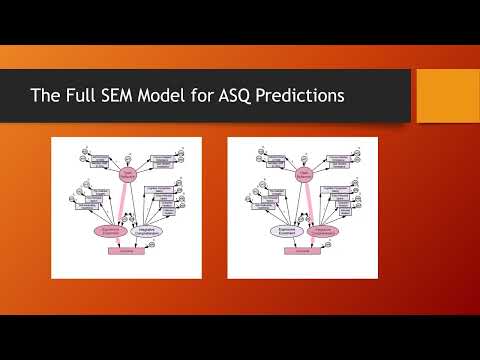 Speaker: Don Kuiken @Donald_Kuiken
Speaker: Don Kuiken @Donald_Kuiken
 Affiliation: University of Alberta
Affiliation: University of Alberta
Title: How Poetic Metaphors Frame the Textual Life-world
Abstract (long version below): Metaphoric (and quasi-metaphoric) linguistic structures include resonant modifier-modified relations, unidirectional (A is B) metaphoric mappings; bidirectional ([A is B] and [B is A]) metaphoric mappings; the emergent meanings of bidirectional mappings; and extended metaphors. A model that differentiates these linguistic structures is anticipated by a theoretical tradition that leads from Kant’s (2009) discussion of symbolic hypotyposis to Ricoeur’s (2004) discussion of living metaphor (Cazeaux, 2007). Correspondingly, adapting Tourangeau and Sternberg’s (1982) domain interaction model (Katz & Al-Azary, 2017) facilitates identification of a temporal pattern that leads from bidirectional metaphoric mappings to thematic characterization of the life world “as a whole.”

 Long abstract
Long abstract
The theoretical position summarized here provides an alternative to the widely endorsed foregrounding-defamiliarization approach to self-transforming reading experience (Hakemulder et al, 2021). Rather than a loosely organized collection of local deviations from conventional linguistic structures, there are compelling reasons to examine how poetic metaphors emerge from a hierarchical array of semantic juxtapositions that includes modifier-modified relations; unidirectional metaphoric mappings; bidirectional metaphoric mappings; the emergent meanings of bidirectional mappings; and extended metaphors. Rather than simply differentiating these metaphoric (and quasi-metaphoric) structures, it is useful to reconsider a theoretical tradition that leads from Kant’s (2009) discussion of symbolic hypotyposis to Ricoeur’s (2004) discussion of living metaphor. Then, by adapting Tourangeau and Sternberg’s (1982) domain interaction model—and its extension in a theory of poetic metaphor (Katz & Al-Azary, 2017)—it is possible to articulate a temporal pattern that moves from quasi-metaphoric semantic resonance to extended metaphoric—and self-relevant—characterization of the life world “as a whole.”
Semantic Resonance. Literary texts often juxtapose neighboring instances of the same categorial concept (e.g., a flute and a bird as sources of “melodic flight”). The engaged reader may “sense” semantic resonance between such neighboring representations—even without the syntactic structure that might link them as the topic and vehicle of nominal metaphors (e.g., in modifying-modifier compounds such as “flute birds”; Al-Azary et al., 2021). Readers may sense such semantic resonance as evidence that their reading experience is “meaningful.”
Epistemic Metacognition. A pivotal aspect of metaphor comprehension is metacognitive detection of an epistemic tension that exceeds semantic resonance. Searle (1979) proposed that metaphor comprehension involves dual attunement to (a) a metaphoric (A “is” B) assertion and (b) a complementary literal (A “is not” B) assertion. For example, to say that my surgeon is a butcher brings attention to the metaphoric truth-value of a statement (e.g., my surgeon [metaphorically] “is” a butcher) and simultaneously to its literal falsehood (e.g., my surgeon [literally] “is not” a butcher).
Unidirectional Metaphoricity. Explication of this epistemic tension is often portrayed as the unidirectional “mapping” of a metaphoric vehicle onto a metaphoric topic (Lakoff & Turner, 1989). Determination of which vehicle attributes are unidirectionally mapped onto the topic depends upon selection of salient attributes of the vehicle that were not salient attributes of the topic prior to unidirectional mapping (Ortony, 1979). Also, vehicle attributes may be transformed prior to unidirectional mapping onto the topic. There is no consensus about how such attribute transformations are derived, although likely sources include polysemy, analogy, and extended metaphor (Vega-Moreno, 2004). These forms of topic-vehicle interplay determine the nature of unidirectional mapping but disclose nothing novel about the vehicle.
Bidirectional (Abstract-Ontological) Metaphoricity. In contrast, the present framework focuses on the disclosive potential of bidirectional metaphoric structures. The bidirectionality of poetic metaphors is posited within a tradition extending from Richards (1936) to Goodblatt and Glicksohn (2022). In contrast to unidirectional mappings, the bidirectional epistemic import of the vehicle and topic discloses emergent meanings (Reid & Katz, 2022). Emergent meanings are attributes of the topic and vehicle that were not salient for either category considered separately but that become salient for both categories during metaphor comprehension.
In this context, it is useful to consider the domain interaction model of metaphor comprehension (Katz & Al-Azary, 2017; Tourangeau & Sternberg, 1982). The domain interaction model describes the juxtaposition of a topic and vehicle that are both “semantically dense” (concrete, embodied, self-relevant; Westbury & Wurm, 2022) but that, at an abstract (hypernemic, taxonomic) level, are “distant” from each other. Using this model, it is possible to identify attributes of the metaphoric vehicle that are sufficiently abstract to also be attributes of the metaphoric topic and, in that way, support disclosure of their emergent meanings. Moreover, bidirectional metaphor comprehension discloses an abstract (and ad hoc) ontological category that subsumes two or more semantically dense regional ontological categories.
Metaphors of Personal Identification. The cumulative effect of the emergent meanings of recurrently extended poetic metaphors is an abstract-ontological concept that is “existentially inclusive” but not (pace Kant) “existentially totalizing.” Existential inclusiveness depends upon metaphoric extensions that generate an unfolding sense of a meaning-finding self that Cohen (1999) calls metaphors of personal identification. Consistent with Cohen’s account, there is fledgling evidence that engagement with poetic metaphors facilitates recognition of subsequent personifying metaphors (Dorst et al., 2011) and that the cumulative effect of recurrent personifying metaphors is a sense of self as the author of unfolding metaphor extension and explication (Bruhn, 2011). The progressive integration of compound metaphors of personal identification differs from the individual personal insights derived from retrospective reflection.
Implications. The preceding formulation sets the stage for establishing the discriminant validity of semantic resonance, unidirectional metaphoric mappings, bidirectional metaphoric mappings (emergent meanings), and metaphors of personal identification. Preliminary efforts are available—and there are compelling reasons to continue these efforts within appropriate empirical paradigms.

